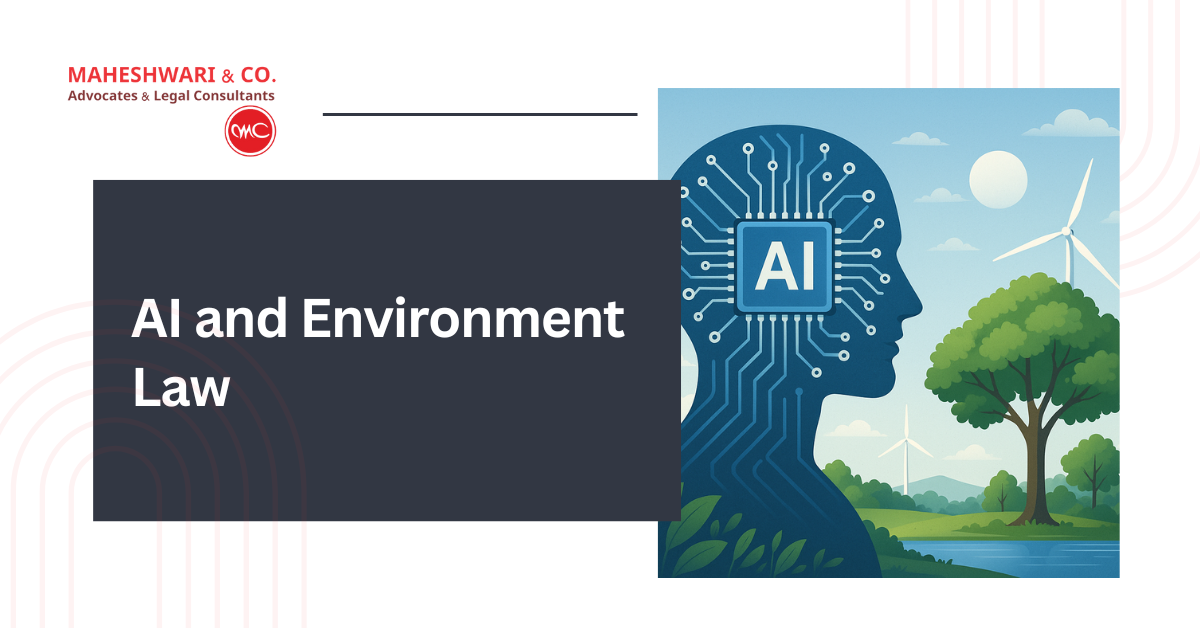Introduction
Uncontrolled infrastructure growth across the world often ignores environmental consequences, leading to deforestation, biodiversity loss, rising pollution, and greater vulnerability to climate change. Balancing economic expansion with sustainability has therefore become one of the toughest challenges for policymakers environmental sustainability.
Today, the rapid rise of artificial intelligence (AI) has added a new dimension to this issue. In 2025, AI has become inseparable from daily life — one command can generate solutions, automate tasks, and make decision-making seamless. But this technological convenience comes at a hidden cost: the massive environmental burden AI systems carry.
Research suggests that training large AI models can consume as much electricity as hundreds of households annually, while global data centers use billions of gallons of water and emit carbon footprints comparable to entire nations. This reality raises urgent questions for governments, corporations, and consumers about how to make AI innovation more sustainable.
Development of AI and Its Environmental Impact
1. Enormous Energy Demands
Advanced AI models rely on vast computational power, making energy use a critical concern. Training and maintaining these models can produce carbon emissions equivalent to thousands of flights. For instance, a single AI query may consume five to ten times more energy than a simple web search.
With AI adoption expanding at record speed, projections suggest that AI could consume nearly 0.5% of global electricity by 2027, further straining existing power systems and undermining global climate goals.
2. Excessive Water Consumption
Cooling systems in data centers, which prevent servers from overheating, demand huge volumes of water. Microsoft and other tech giants have already reported significant increases — up to 30% — in their annual water consumption due to AI operations.
In water-scarce regions, this dependence worsens the risk of shortages for households, agriculture, and industries. Furthermore, producing AI hardware requires rare earth minerals, which adds stress on ecosystems through mining, habitat destruction, and resource depletion.
3. Rising Electronic Waste
AI’s hardware-intensive growth is shortening the lifecycle of devices such as servers, GPUs, and chips. Each new generation of AI models demands more powerful processors, forcing companies to upgrade regularly and discard older systems.
This accelerated hardware turnover is driving up e-waste while also fueling demand for rare earth elements, both of which create severe environmental and health risks.
AI Development and Challenges in India
Limited Access to Water
In India, where more than 20% of rural households still lack tap water (as per the Jal Jeevan Mission Mission), AI-driven water consumption presents a worrying scenario. As large-scale data centers expand across the country, the competition between industrial usage and community needs could intensify water scarcity.
Growing Energy Needs
India has positioned itself as a power-surplus nation, with renewable energy making up nearly 46% of its total installed capacity. However, AI poses fresh challenges. According to a Deloitte India report, the country will need 40–50 TWh of additional electricity and millions of square feet of new infrastructure to accommodate AI-powered data centers by 2030.
The International Energy Agency also warns that electricity consumption from AI data centers may double by 2030, intensifying pressure on India’s energy grid.
Carbon Emission Concerns
Although India is not legally bound under international agreements like the Paris Accord to reduce carbon emissions immediately, it has pledged to take sustainable steps. AI-related energy demands risk undermining progress, especially as India faces increasing international scrutiny over its climate commitments.
Emerging Regulatory Framework
Globally, efforts are underway to build laws that address AI’s environmental impact. Some approaches include requiring environmental impact assessments, enforcing energy and emissions standards, and penalizing violations.
For example, the US Artificial Intelligence Environmental Impacts Act of 2024 seeks to promote transparency by encouraging AI developers to report environmental costs.
In India, however, there is no standalone law regulating the ecological consequences of AI. Current frameworks — such as the Information Technology Act, 2000, and the Digital Personal Data Protection Act — touch on aspects of AI but do not address sustainability. NITI Aayog’s National AI Strategy encourages responsible AI practices but lacks enforceable regulations.
Experts argue that India urgently needs specific, binding rules to ensure that AI growth aligns with environmental protection goals.
Conclusion
Artificial Intelligence is no longer just a tool for digital progress — it is also a significant contributor to environmental stress. From soaring energy use to mounting e-waste, AI threatens to undo sustainability gains unless urgent policy action is taken.
India and the world must establish robust legal and regulatory frameworks that:
- Track and regulate AI’s environmental footprint,
- Set sustainability benchmarks,
- Promote eco-friendly industry practices, and
- Encourage transparency and accountability.
The challenge lies in striking the right balance: harnessing AI’s transformative potential while safeguarding the planet’s finite resources. Only then can AI become not just a driver of innovation, but also a partner in building a cleaner, more sustainable future.
This content is originally posted on: https://www.maheshwariandco.com/
Source: https://www.maheshwariandco.com/blog/ai-and-environment-law/



